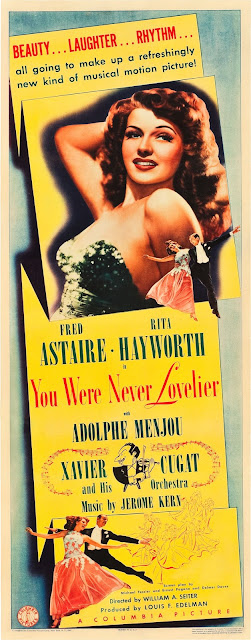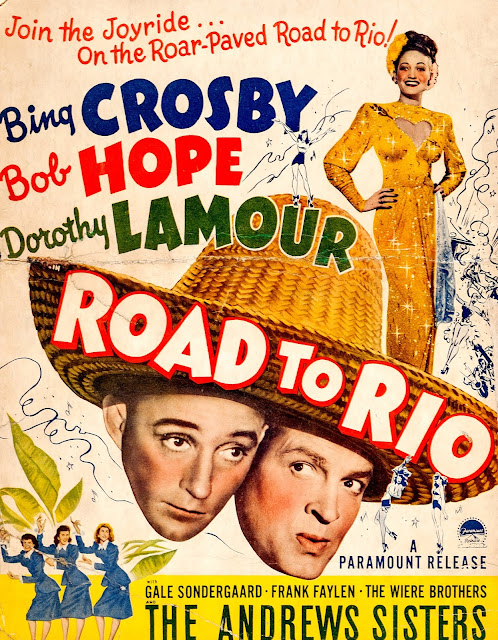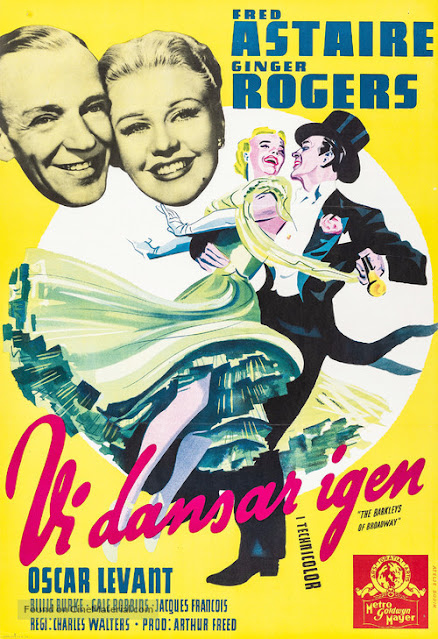Orson Welles at 100: A Symposium
About a month ago, I got the pleasure of attending the Orson Welles Centennial Symposium at IU, an event I've maybe mentioned on here once or twice. While I was unable to make it to many things thanks to my job, I did get to see quite a few panels and films that were certainly exciting. The celebration kicked off on a Tuesday night (April 28th) with a screening of Chimes at Midnight, or Falstaff, a film that Welles claimed was his favorite and many say compete with Citizen Kane as his finest piece.
I had never seen Chimes before and while I certainly appreciated it, I would much rather watch Kane. Call me an uneducated peasant, but it just didn't hit me where Kane does. That's not to say that the film isn't great -- it is. The battle scene is surprisingly unrelenting and confined, making you feel as though you're actually there. And Welles is of course wonderful as the rotund, comical, and drunken Falstaff. The film was introduced by James Naremore, a great Welles scholar, and then following the movie was an 18-minute documentary that gave a brief history of the film's production and its recent restoration. Naremore and other sources I've read have commented on the somewhat poor sound quality of Chimes, but I honestly never noticed a problem.
I had never seen Chimes before and while I certainly appreciated it, I would much rather watch Kane. Call me an uneducated peasant, but it just didn't hit me where Kane does. That's not to say that the film isn't great -- it is. The battle scene is surprisingly unrelenting and confined, making you feel as though you're actually there. And Welles is of course wonderful as the rotund, comical, and drunken Falstaff. The film was introduced by James Naremore, a great Welles scholar, and then following the movie was an 18-minute documentary that gave a brief history of the film's production and its recent restoration. Naremore and other sources I've read have commented on the somewhat poor sound quality of Chimes, but I honestly never noticed a problem.
The next day was the official opening of the symposium as panel discussions, lectures, and more screenings started. For awhile now, I've been hesitant to watch The Magnificent Ambersons because I had heard so many conflicting thoughts about it, plus it was famously chopped up by RKO and editor Robert Wise and I wasn't sure I wanted to see it. But I figured celebrating Welles wouldn't be complete with seeing it, and I'm so glad I did. The film was charming, brilliant, heartbreaking... I really liked it. Afterwards, the audience was treated to a surprise showing of a rough "restoration" of Ambersons' lost footage.
For those of you who don't know, a quick history: Welles was asked to go to Brazil and film something as part of the Good Neighbor Policy; obviously he couldn't turn it down, so he made sure he would be able to edit Ambersons while he was away. Despite assurances, RKO let Wise and others edit it however they pleased. Welles had to communicate through telegrams and letters how he wanted it cut, but these were literally thrown in the trash. Ambersons always remained a tough subject for Welles, and he never spoke to Wise again. The director didn't get to finish his Brazil documentary It's All True, either. He was accused of running over budget, which was completely false. But, back to Ambersons...
 |
| While waiting for Too Much Johnson, I snapped this photo of Roger Riley (in the hat), Chuck Workman (in the brown jacket with his back to the camera), and Joseph McBride (in the glasses and beard). |
Before the negatives were destroyed, Wise took photos of frame enlargements of the cut scenes; a man named Roger Riley took the stills he could get and stitched them together, then he added in the original Bernard Herrmann score. Riley put in audio of he and his friends reading the dialogue that was supposed to go with these scenes, making it as complete as he could. So it's not an honest-to-goodness restoration, but it functions in the same way and it was quite interesting to see. Naremore and Joseph McBride, a scholar and friend of Welles, both said that it was the right way to do it. McBride also said after the film that he hopes to go to South America soon and search for the lost footage. Although some say that all of the cut material was destroyed, there are sources that say Welles was sent the cut he originally wanted and it may still be in Brazil. McBride said he has nightmares that he'll find the film can and open it and it'll just be dust. There's definitely hope out there, though. Welles had a penchant for leaving cans of film in random hotel rooms and whatnot.
 |
| Joseph McBride talking about Too Much Johnson after the screening. |
Friday was perhaps the best day because I was able to see Too Much Johnson on the big screen. In 1938, Welles was putting on the play Too Much Johnson and he wanted to mix film with the stage production. Some of the film would serve as a prologue and some would be used to show action that couldn't be properly shown on the stage. The film was never actually shown, though. The popular reason given is that the theater they were at wasn't equipped to do it. McBride has a theory that Welles was too busy with a radio production of Dracula on top of the play and he just ran out of time to edit it. The footage was then considered lost for years after the house Welles was storing it in burned down in 1970. McBride actually talked to the director three weeks after the fire and was surprised to find that he wasn't upset about the loss at all. In the 1960's, Welles had begun to finish editing the film to give to Joseph Cotten as a Christmas present one year, but he seemed relieved that no one would be able to watch it after all. In fact, Welles was still upset with McBride for discovering an eight-minute short he did in 1934 called The Hearts of Age. McBride thinks that Welles didn't like people seeing such amateurish works as Hearts and Johnson. However, Johnson was found in Italy in 2013, practically pristine.
The George Eastman House restored whatever was necessary and they decided to leave the film unedited. There is a 40-minute edited version out there, but Eastman House thought fans would enjoy seeing it uncut. The first few scenes were fully edited by Welles, and they were fantastic. After that, though, scenes were a little too long and multiple takes were shown. It should've been annoying, but it was more interesting than anything else. As someone at the event said, it was like seeing "Orson Welles's workshop." The film was meant to be in the style of silent comedies, so while the audience watched the film, a pianist was there to accompany it and a representative of Eastman House joined in now and then with facts and tidbits about the shooting, locations, and other things. It was a wonderful presentation.
I learned that one of the rooftops used for the hilarious chase sequence had only a few days before been used by a man to jump to his death. The New York Post ran a headline claiming that Welles was profiting off the man's death, even though he really wasn't. At the end of the film, the actors were shooting in an actual working quarry, leading the workers to say that "ham actors" were running around and driving them crazy. Another great thing to learn was that Katharine Hepburn saw the play Too Much Johnson two times and loved Joseph Cotten so much that she cast him in a little-known Broadway play she was preparing called The Philadelphia Story.
I learned that one of the rooftops used for the hilarious chase sequence had only a few days before been used by a man to jump to his death. The New York Post ran a headline claiming that Welles was profiting off the man's death, even though he really wasn't. At the end of the film, the actors were shooting in an actual working quarry, leading the workers to say that "ham actors" were running around and driving them crazy. Another great thing to learn was that Katharine Hepburn saw the play Too Much Johnson two times and loved Joseph Cotten so much that she cast him in a little-known Broadway play she was preparing called The Philadelphia Story.
Joseph Cotten was spectacular in Too Much Johnson, by the way. The plot is super convoluted and screwball, but the essence of it is that a married Cotten is having an affair with Arlene Francis, who is married to Edgar Barrier. Barrier finds out about the infidelity, but doesn't have much info to figure out the identity of his wife's lover except for a vague torn picture of Cotten and seeing him run from his wife's room. The film has an amazing chase sequence between Cotten and Edgar Barrier, and it's really quite funny. They weave around stacked crates, barely missing each other; Cotten climbs roofs and hangs off of chimneys; Barrier starts flipping hats off of every man in sight to see if it matches the picture he has. Too Much Johnson had no stunt men, and the stuff these guys did is seriously heart-stopping. At one moment, the Eastman House rep said that he was "constantly surprised that this wasn't Joe Cotten's last film" and it's so true. It also makes you wish he had done more comedies -- he would've been great at screwball.
 |
| Poster inside the Cinema advertising all the Welles screenings. |
 |
| Part of the symposium's schedule. |
 |
| In the lower lobby of the Cinema, there was a display of Welles memorabilia from the Lilly Library's archives. |
 |
| More from the lobby's display. |
 |
| Lobby display piece. |
 |
| The sign outside of Thursday's reception in the Lilly. |
 |
| I kind of snuck this picture of Jonathan Rosenbaum (glasses and long gray hair) and Richard Dyer (far right) sitting outside of the Cinema before Too Much Johnson. |
While the symposium was officially done by Sunday, May 3rd, for Welles's actual birthday on May 6th, the Cinema showed Citizen Kane. I had never seen it in a theater and it was glorious, guys. Really and truly. I've had so much fun celebrating this centennial, and I hope IU does more amazing stuff like this. I'm really disappointed that I didn't get to see Touch of Evil, The Trial, Mr. Arkadin, or F for Fake, which were all showing, but TCM is fortunately airing these films on Fridays this month as part of their own celebration of Welles's 100th. I did, however, get to see lots of cool scholars whose works I've studied in and outside of class, which was a little surreal. I even sat in the same row as Richard Dyer at Chimes at Midnight! I think all of the credit goes to Orson Welles, though, for being incredible enough to inspire so many fans to come together and enjoy his life and works.
With love,
Michaela















Comments
Post a Comment